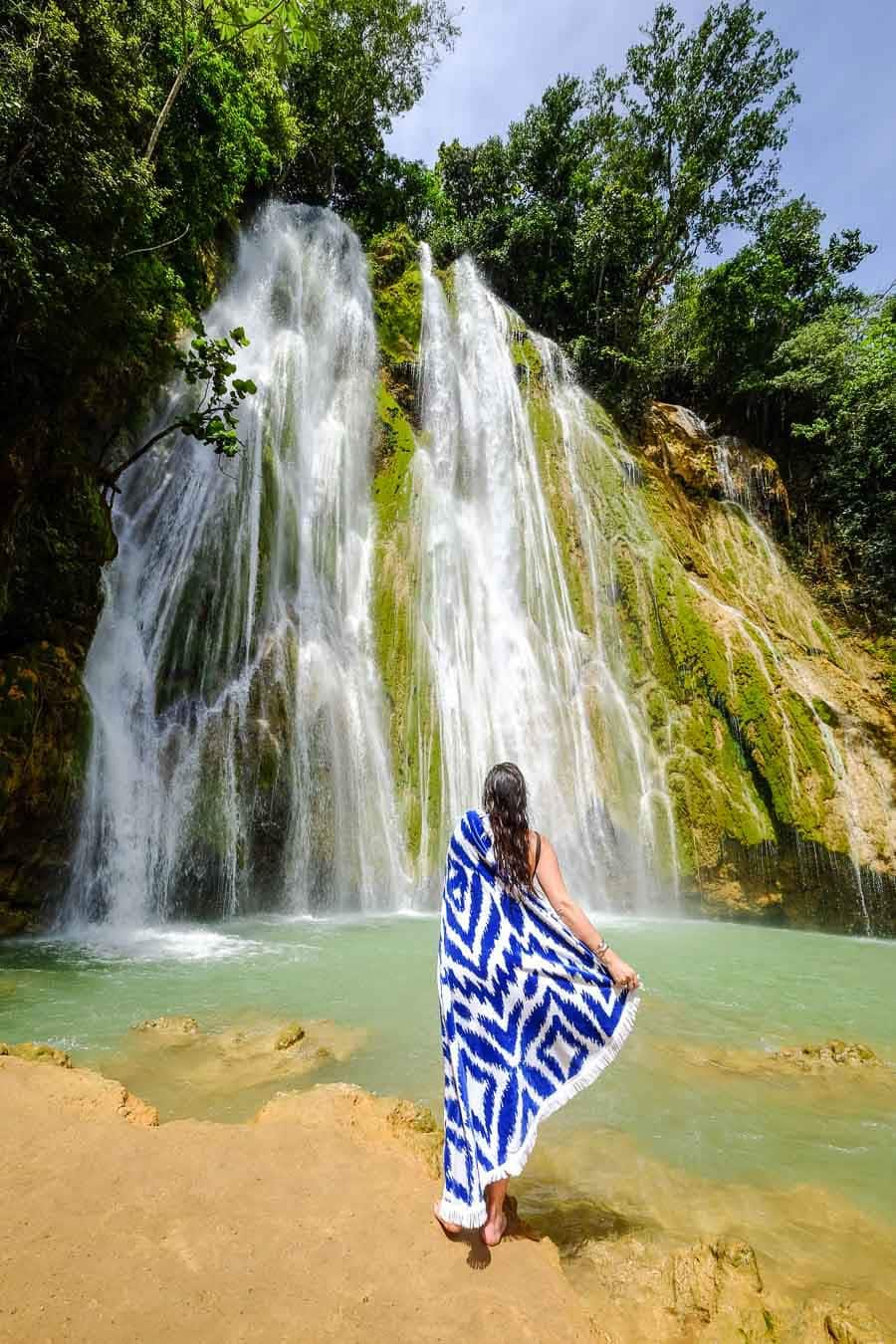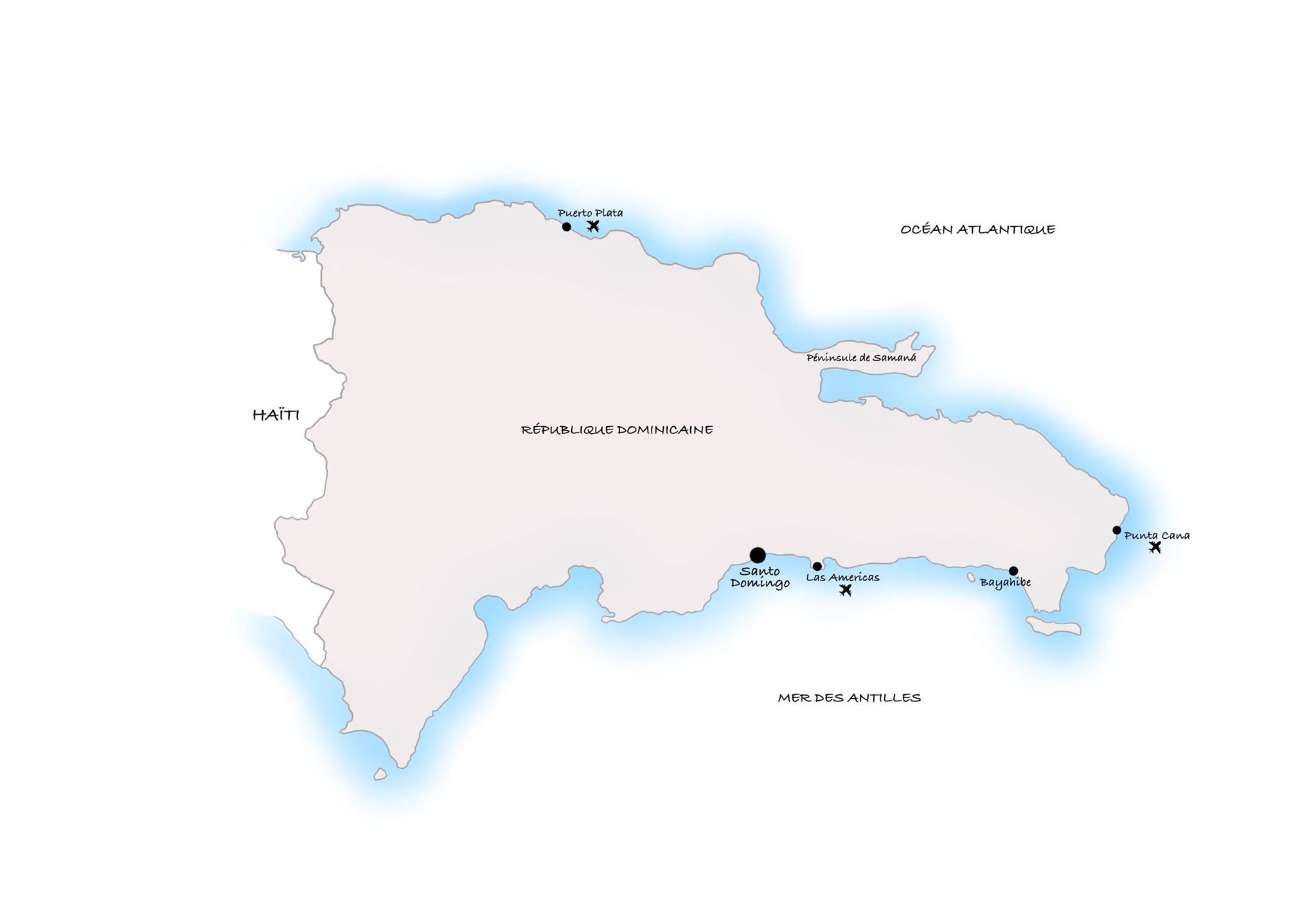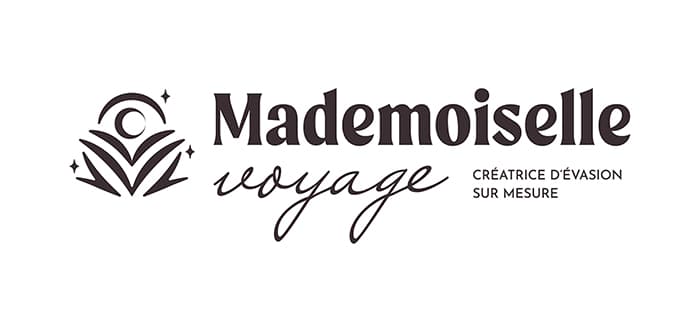
The Dominican Republic is an island in the heart of the Caribbean between Cuba and Puerto Rico, bordering Haiti. The island is bordered by the Atlantic Ocean to the north and the Caribbean Sea to the south. We know the Dominican Republic for its many Club Hotels and superb paradise beaches, but it’s also home to lush green landscapes, mountainous terrain and unique experiences.
I invite you to consult all our other articles on the Dominican Republic to help you prepare for your trip:
- What to see on the Samana Peninsula
- Where to sleep in Las Terrenas
- Top 7 of the peninsula’s most beautiful beaches
- What to do in Santo Domingo
- We tested the colonial boutique hotel in Santo Domingo

VOL
- From Paris, allow around 8 to 9 hours‘ flying time to reach the destination. It all depends on the winds and the arrival airport: Punta Cana or Santo Domingo.
- Several airlines offer direct flights to the Dominican Republic, including Air Caraibes and Air France.
- There are several airports on the island: Punta Cana, Santo Domingo
- Flight prices start from 500 euros return in economy class.
JET LAG
Compared with France, you need to allow 5 hours less in winter and 6 hours less in summer. When it’s midday in France, it’s 7 a.m. in the Dominican Republic in winter and 6 a.m. in summer.
CURRENCY
- The country’s currency is the Dominican peso (RD$)
- The US dollar is accepted almost everywhere.
- Vending machines are available in larger hotels, for a small fee. Most ATMs have a withdrawal limit, generally set at RD$4,000, except for Banco Popular (which has a withdrawal limit of RD$10,000).
- To avoid charges, take US dollars with you before you leave, change large-denomination notes into local currency and pay as much as possible in cash rather than by credit card. Tipping is not de rigueur in the Dominican Republic.
LANGUAGE
- Spanish is the official language, but only in the most touristic areas.
- Locals can gabble a little English and French
- No vaccinations required for Dominican Republic
- Make sure you have a good mosquito repellent for your clothes and skins, because they won’t miss you! Keep your legs and arms well covered at dusk and dawn. Choose rooms with mosquito nets, fans or air conditioning. And don’t forget to eat spicy food, as mosquitoes don’t like spices!
- Don’t drink tap water, as it’s not fit for human consumption. Drink mineral water or take water purification tablets.
- Take a small first-aid kit with a few basic medicines (headaches, burns, digestion, etc.).
- Good protective cream, as the sun beats down hard on these islands
- Take out good medical insurance if necessary. In hospitals, consultations are free, but you have to pay for tests, X-rays and medicines. The price of private clinics is often exorbitant.
- Beware of water from ice cubes in ice creams, fruit juices, cocktails… remember to remove them to avoid disaster!
- For French nationals, you’ll only need a passport valid up to six months after the return date of your trip to enter the territory.
- No need for a Visa! A tourist card (tarjeta de turismo) will be given to you on the plane.
- If you wish to stay longer than one month, you will have to pay an additional fee.
- For travelers transiting through a U.S. airport, you need to find out about the legislation governing entry into the U.S.
ELECTRIC CURRENT
- Think about a universal adapter, as the plugs are different from those in France. They’re the same as in the USA.
- On-site power is 110 volts.
INTERNET
Many hotels and guesthouses offer free wifi in their establishments, but connections can be slow. When it comes to international calls, be really careful, because if you don’t have an international package, it’s going to cost you! You can buy a Explod Sim card in Claro boutiques (the country’s main telephone operator). Calls are unlimited, as is Internet access, the card really does work in all 4 corners of the country, and will cost you around ten euros for around 5 days.
The hotel offer in the Dominican Republic is truly considerable, as the country is a highly developed tourism destination. So there’s something for every taste, every desire and every budget: guest houses, inns, luxury hotels, ecolodges, unusual hotels, charming and colonial accommodations, villa rentals, aparthotels ….
You should know that:
- le camping est quasiment inexistant in the country, except during Holy Week, when the city dwellers come to settle on the beaches.
- It’s very difficult to stay with local people et de trouver des B&B (Bed & Breakfast) comme en Europe.
- A number of youth hostels and small hostales have also sprung up for backpackers and budget travelers.
Tourism and attitudes have come a long way in the Dominican Republic. Resorts and cut-price packages can still be found in Punta Cana, but today’s travelers are looking for authenticity and are fed up with mass tourism. So there’s something for everyone: breakfast, half-board, full-board or all-inclusive. We’re even seeing the emergence of more and more hotels dedicated to adults only, and therefore forbidden to children under 18. Some resorts are also increasingly offering à la carte packages.
TRANSPORTS
You have three options:
- Rent a car for your travels. If you’re planning to get off the beaten tourist track, you’ll need a 4×4 model that can handle the trails, as the secondary roads are in very poor condition. Beware of the many potholes, unpaved trails and speed bumps! For safety reasons, don’t drive at night (roads are poorly lit and there are many obstacles). Always check your rental contract, the car and remember to take out insurance. Petrol is cheaper than in France, and there are many petrol stations throughout the country.
- Take local transport: you’ll find buses, cabs and the famous guaguas, local minibuses with no predefined stops. They’re easy to recognize because all you have to do is wave to the driver when you want to get on or stop. Private guaguas can be hired for small groups of up to 10 people. It’s great to take public transport, but you mustn’t be in a hurry and have time to spare. In fact, you have no precise timetable and you don’t know how many rotations these transports make per day. Always remember to negotiate your fares, as cabs don’t have meters!
- Hiring a chauffeur guide Spanish-speaking or French-speaking (if available) for your travels. You’re free, you don’t drive, and you don’t have to worry about transportation or schedules. Please contact us for a quotation.
The basis of Dominican cuisine called « Creole food » is composed of yucca, plantain, rice, coffee, cocoa and pineapple. By the sea, enjoy succulent fish, seafood and lobster when in season. Throughout the country, you can stop wherever you like to enjoy your meals. There are fast-food outlets in major cities and tourist areas, but also small restaurants or boui bouis, with different names.
- Frituras : most popular and often located along roadsides. They open in the morning and leave when everything is sold out. You’ll find empanadas, for example, filled with ham, cheese or vegetables.
- Pica pollos: these are small stalls usually selling pollo frito, fried chicken accompanied by tostones (fried plantains) and rice.
- Comedores: seated at a table, you order a menu of the day (servicio) which includes a raw vegetable starter and a meat dish with rice and beans.
- Cafeterias : found in major cities.
- Paradas : roadside stops on major roads, mainly for Dominican truckers. You’ll be served a hearty, inexpensive local meal to eat on the spot.
Restaurantes : A wide choice of restaurants, especially in the big cities. Beware of the price, as few of them advertise the menu outside. Beware of illegal surcharges: 10% service charge and 18% tax (local VAT).
Some typical dishes:
- Arroz with string bean : which consists of rice accompanied by dried beans and chicken.
- Le mangú of green bananas: a dish the Dominicans love. This plantain purée can be eaten for breakfast, lunch or dinner. It’s usually accompanied by fried salami, fried egg, and cooked avocado and onions for a little decoration on top.
- The tostones : This is another way of cooking plantain. This time, they are fried in oil.
- La Bandera: traditional dish of rice, beans, meat and fried plantains
- Visit Sancocho : stew of seven different meats with vegetables
- Chicharones : pork rinds marinated in bitter orange juice and cooked in their own fat. (I don’t like it at all!).
- The pica pollo : fried chicken served with tostones, fried plantains.
When it comes to alcohol, enjoy the local beer President and the Mamajuana, an arranged rum of Indian origin made from roots, cinnamon, cloves and guaiac wood.
What about safety in the Dominican Republic? The country is still generally safe, but delinquency does exist. When you arrive, don’t be surprised to see armed military, police and bank guards – it’s part of the country’s culture.
In general, you don’t really feel insecure in this country. However, the Dominican Republic remains a poor country, with some neighborhoods, such as Santo Domingo, more sensitive than others. But beware, because I’ve heard some rather creepy stories of machete attacks in front of large resorts, but also on isolated beaches. NEVER leave your belongings unattended, even on a deserted beach! At any moment, you could be followed by a group of youngsters who will steal everything you’ve got. Don’t go out at night in less busy streets
Be vigilant and use common sense: don’t walk around with eye-catching jewelry, don’t display the latest camera around your neck…. be discreet in your attitude.
You’re not safe from police racket and money theft! You need to carry small denominations of money, scattered in both pockets, so that in the event of an attack, you can give it to them quickly.
The Dominican Republic is renowned for its sandy beaches, turquoise waters and paradise islands. Here’s a short list of things to pack, depending on the season you choose:
- Swimsuits, hats and pareos
- Beach bag and flip-flops
- Light, comfortable clothing for your excursions
- Sandals and a pair of sneakers
- A pair of shoes suitable for muddy terrain if it rained the previous day
- A Kway just in case
- A little wool for cooler evenings after a shower
- A very good repellent
- Light, loose-fitting, light-coloured clothing with plenty of coverage for the rainy season to protect you from mosquito bites.
- Soothing cream for severe stings
- High-protection sunscreen and after-sun cream
What to bring back as souvenirs from the Dominican Republic? cigars, coffee, delicious vanilla, rum, chocolate, local alcohol, but also paintings, handicrafts, fabrics, jewelry with a Larimar stone, an old license plate…
The climate in the Dominican Republic is a tropical climate so you really can go all year round on this Caribbean island. I’ve been there twice, in February and June and in two different parts of the country, and I’ve always enjoyed my trip. There are pros and cons!
You have two periods:
- The dry season : from December to April. Temperatures fluctuate between 20°C and 30°C. The days are sunny, the waters are warm and the sun beats down hard. It’s also high season so more crowds and higher prices.
- The rainy season : from May to October. You’ll normally have fine weather, but also a few showers of varying intensity in the late afternoon, evening or night. In itself, this isn’t really a problem, as the heat and humidity can be unbearable for some people. These rains cool the atmosphere. It’s also low season, with more affordable prices and fewer people in hotels and resorts.
- It’s not advisable to visit between September and November, as there can be storms and cyclones.
⚠️ During the rainy season, there can be a lot of mosquitoes: from October to May in the north of the country, and from May to October on the south coast.
The budget you need for a trip to the Dominican Republic will depend above all on the type of hotels you want, the time of year you’re traveling and the airfares you can find. If you opt for an all-inclusive package in Punta Cana, you can find 700€/p per week in a club hotel! Unfortunately, it’s also mass tourism, so it’s not at all authentic.
It is advisable to plan your stay well in advance to take advantage of special rates. A round-trip flight in high season costs around €600 to €700. Concerning food, we eat really well and cheaply ! In the local villages and towns, you can sample specialities for as little as $5 to $10/p, and in the club hotels, you’ll find a wide range of specialities. half-board or all-inclusive formulasto help you prepare your budget.
On average, you can expect to pay from €2,000/p for 8 to 10 days on site, for an authentic trip off the beaten track.
Before you leave, don’t forget to check out our other articles on the Dominican Republic to help you prepare for your trip:
- What to see on the Samana Peninsula
- Where to sleep in Las Terrenas
- Top 7 of the peninsula’s most beautiful beaches
- What to do in Santo Domingo
- We tested the colonial boutique hotel in Santo Domingo
Please note that as an accredited bespoke travel designer, I offer to accompany you in the creation of your tailor-made trip to the Dominican Republic and create a personalized itinerary tailored to your needs. Please send me an email at : contact@mademoiselle-voyage.fr

